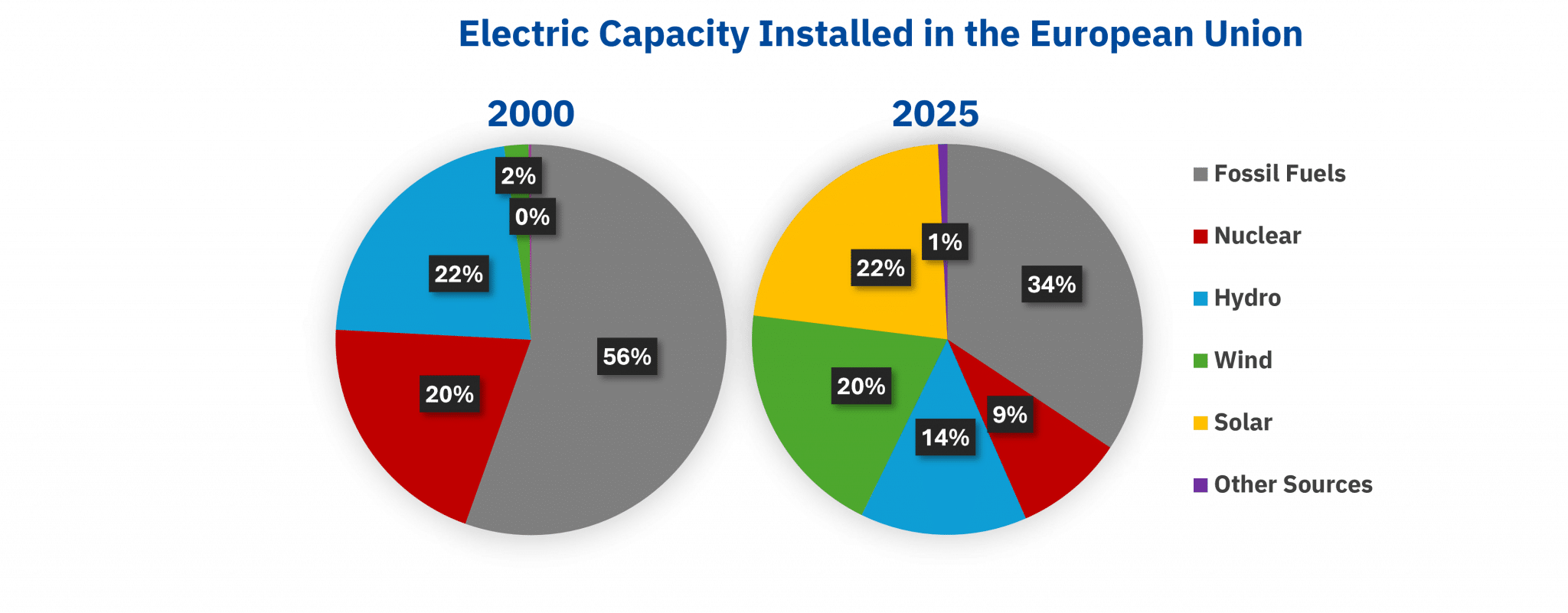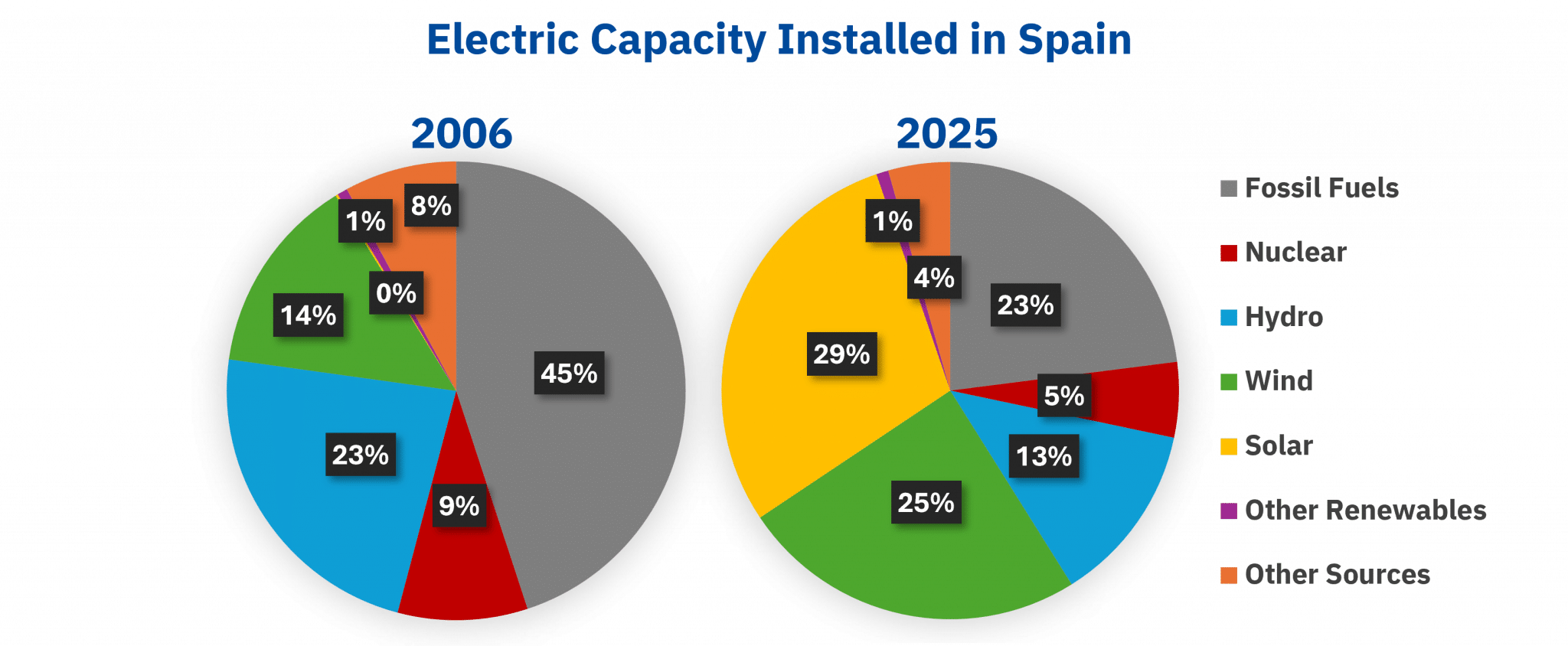AleaSoft Energy Forecasting, September 25, 2025. The electricity system is undergoing an unprecedented transformation. This change is reflected at all levels: in generation, marked by decarbonisation and the energy transition, in demand, driven by electrification and self‑consumption, and in the electricity grids, with the massive integration of renewable energy. This publication is the first in a series dedicated to analysing the historical changes that the electricity system has undergone, as well as assessing its future prospects.
The European electricity system has undergone a profound transformation in recent decades. From a centralised model controlled by public or private monopolies, it has evolved into a liberalised, competitive, more efficient system with a growing share of renewable energy.
Evolution of the electricity system structure
At the end of the 20th century, the Spanish electricity system was dominated by vertically integrated utilities, which managed everything from generation to the retail supply of electricity. The liberalisation process driven by the European Union required the unbundling of activities and the promotion of competition, leading to a fragmented system with specialised operators: TSO, distributors, retailers and independent producers.
The electricity market: liberalisation and price formation
The creation of wholesale markets (OMIE in the Iberian case) allowed prices to be set through supply and demand. Consumers can choose their supplier, and generators compete on equal terms. European integration and physical interconnection between countries reinforce the efficiency of the common market.
The emergence and development of renewable energy
Renewable energy, especially wind and solar energy, began their expansion thanks to public incentives. Today, they compete in the market on their own merits, and their integration raises technical challenges that are driving new models such as self‑consumption, energy communities and PPA contracts.
Prospects to 2030 and 2050: decarbonisation and storage
Europe aims to become a carbon‑neutral economy by 2050. The electricity system will be the driving force behind this transformation thanks to the electrification of transport, industry and buildings. Energy storage, especially batteries, both stand‑alone and hybridised with renewable energy, will be essential to balance a system based on variable renewable sources.
Energy market forecasts: a key tool for the future
The complexity and dynamism of the energy sector require accurate and robust forecasting models. These models enable operators, investors, retailers and consumers to make informed decisions, reduce risks and plan for the future. In an increasingly competitive market, forecasting is a strategic advantage.
This publication provides an overview and introduction to the main milestones of the electricity system and its prospects for the coming years. It also serves as a starting point for a series of publications that will delve into each of these issues in depth, with the aim of offering an up‑to‑date and structured overview of the present and future of the European electricity system.
Forecasts and analysis by AleaSoft Energy Forecasting for renewable energy and storage projects
AleaSoft Energy Forecasting, through its AleaGreen division, provides long‑term forecasts that are essential for financing renewable energy projects and signing PPA contracts, asset valuation and the development of hedging strategies. Among the services provided by AleaGreen are production forecasts for different types of renewable energy plants, together with the corresponding price forecasts.
In addition, the AleaStorage division analyses the viability of battery storage projects, both stand‑alone and hybrid plants, estimating their long‑term revenues and profitability, optimising their operation and providing tailored analyses for different business models.
Source: AleaSoft Energy Forecasting.

